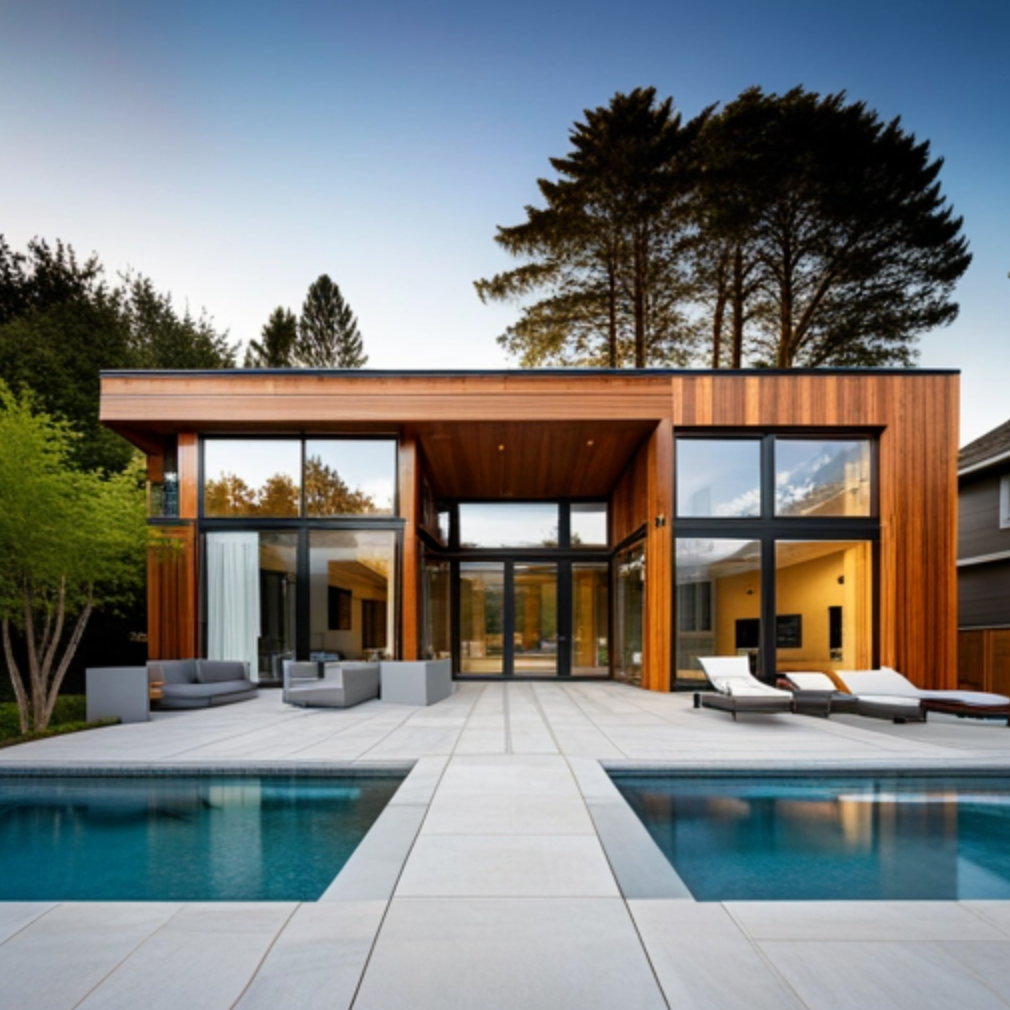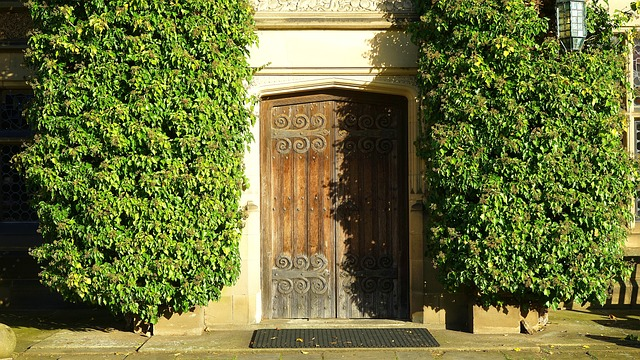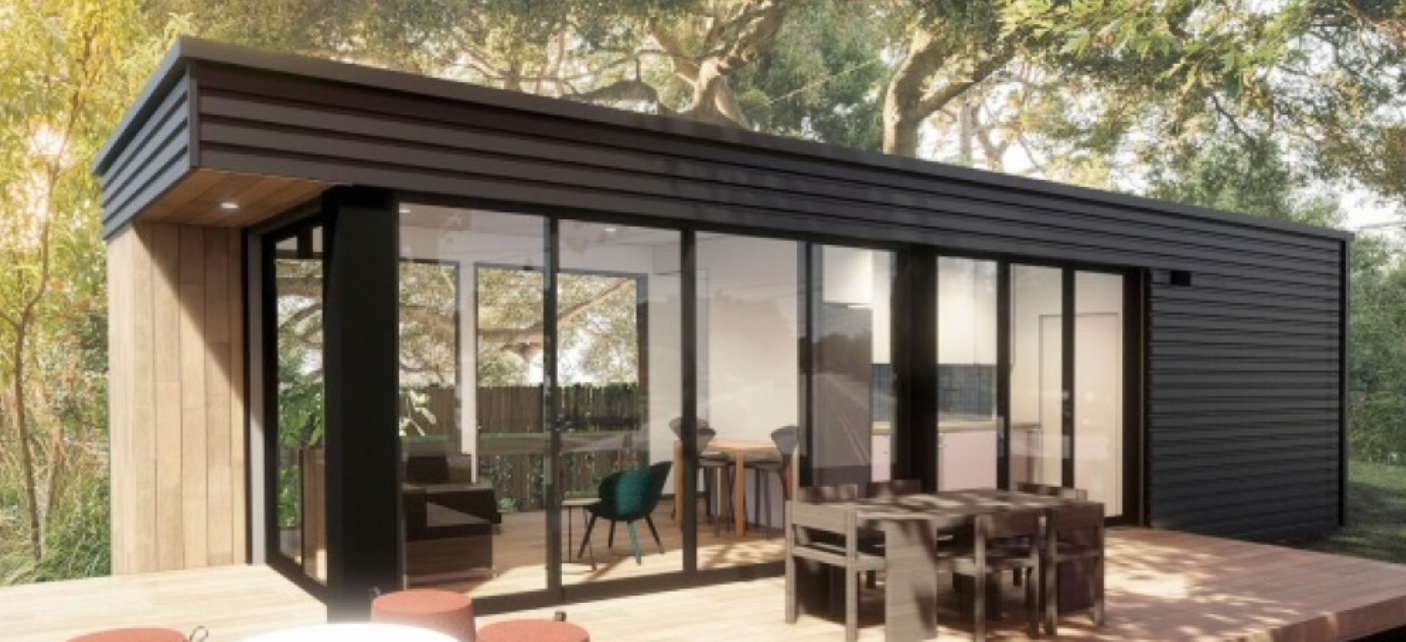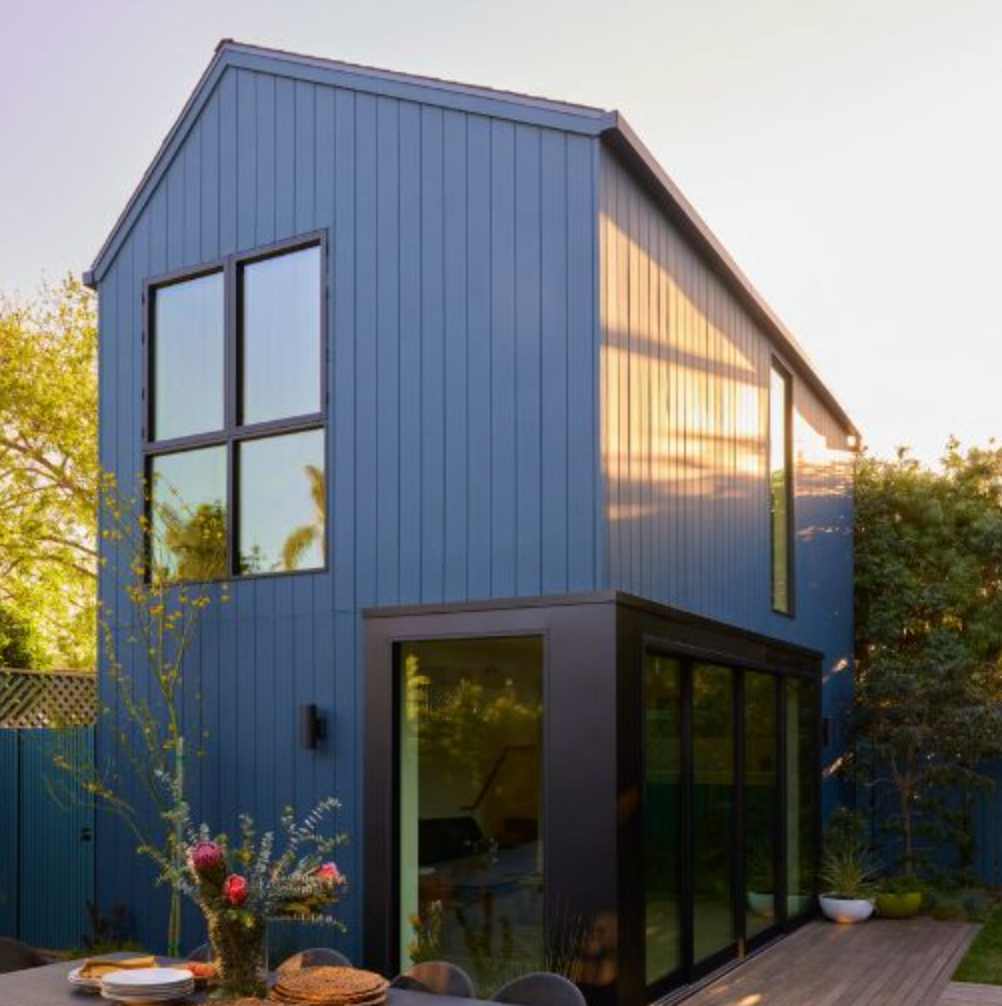ADU Los Angeles: Living in LA can be exciting, but finding affordable housing is a challenge. There’s a solution – accessory dwelling units (ADUs). ADUs are independent living spaces on the same lot as an existing home. They can be detached or attached.
Recent changes in state law and the LA ADU ordinance make it easier for homeowners to build these dwellings. There are two types: detached and junior ADU. Detached units are separate, and junior units are within an existing building, like a garage.
ADUs offer rental income. Homeowners can rent them out, which is great in LA, where housing costs are high and ADU costs are low.
You can increase property value without taking up extra space.
To build an ADU, you need permits and must follow state and local regulations for your existing residence. Consult professionals who specialize in these units.
Make sure each unit has separate sanitation facilities and parking space requirements are met.
A family in LA built a detached ADU for their aging parents who needed care. This gave the parents their own space and provided the family peace of mind knowing their loved ones were cared for.

What are ADUs?
ADUs, also known as accessory dwelling units, are small dwellings built on the same property as an existing primary residence. They can be separate buildings or attached to the main house. They provide living facilities for one or more people and are a solution to the housing crisis in cities like Los Angeles.
In Los Angeles, ADUs come in various forms. Detached ADUs are standalone structures built on the same property. Attached units are added onto an existing structure. Plus, there are junior accessory dwelling units (JADUs).
They share facilities with the primary residence and can be created by converting an existing bedroom or guest room. These offer affordable housing options and rental income.
Before you build an ADU in Los Angeles, there are some important things to keep in mind.
- You need a building permit from the city (ADU permit), and there are rules for maximum size and height.
- You must also adhere to local building codes and zoning requirements (for example for an existing house).

ADU Design Trends in Los Angeles
The City of Angels, known for its trendsetting ways, showcases some unique ADU designs.

Green Roofs
A growing number of ADUs feature green roofs, which are not only eco-friendly but also visually captivating.

Modular Units
Think of it as building with LEGO. Prefabricated parts are assembled on-site. It’s quicker and often more cost-effective.
The ADU Los Angeles Ordinance
The ADU Los Angeles Ordinance outlines main regulations.
They include two types of ADUs
- attached
- detached
The size must not exceed 1200 square feet and must be smaller than 50% of the main house. No extra parking spaces are necessary if the ADU is near public transport. The approval process is streamlined.
Junior Accessory Dwelling Units (JADUs) are allowed with their own bathroom and shared sanitation facilities.
Why ADUs Gained Momentum in LA
Los Angeles, with its sprawling expanse, faces significant housing challenges. Here’s where ADUs step in.
- Addressing the Housing Shortage: With population growth outstripping housing availability, there’s a desperate need for innovative solutions. ADUs, with their compact and efficient designs, offer an alternative to traditional housing structures.
- Optimizing Unused Spaces: Many LA homes have unused spaces like large backyards or spacious garages. Why not utilize them efficiently?
- Economic Considerations: Given LA’s notoriously high living costs, ADUs provide a relatively affordable housing option. Plus, homeowners can earn extra income by renting them out.
How Residents are Transforming Their ADUs
It’s heartening to see LA residents get creative with their ADUs. Some are turning them into art studios, while others see them as serene meditation zones. Then there are those who transform these spaces into bustling home-offices. The possibilities are indeed endless.
What Does This Mean for LA’s Future?
With ADUs gaining traction, the very silhouette of LA’s residential landscape is changing. These units, with their unique designs and functional appeal, are not merely addressing housing issues. They’re transforming the way we perceive urban living.

Benefits of ADUs in Los Angeles
ADUs in Los Angeles are advantageous for urban living. These dwellings provide self-contained living and can be constructed as detached units, adding versatility to existing properties. Let’s consider some benefits:
- Extra Income: ADUs give homeowners the advantage of earning rental income. This additional money flow can help with daily costs and provide economic security.
- Utilizing Existing Space: As land is sparse in Los Angeles, ADUs make use of existing structures or build detached units. This allows people to expand their living space without sacrificing the main house.
- Housing Crisis: ADUs help remedy the housing crisis by increasing the number of available homes, where demand exceeds supply.
- Increased Value: Having an ADU can elevate the worth of a property, making it more desirable to potential purchasers in a competitive real estate market like Los Angeles.
- Flexible Living: ADUs enable multi-generational living or provide separate accommodations for family members. This gives them privacy and independence while still being near the main residence.
Also, ADUs can be designed as JADUs, which are smaller and intended for one or two persons. These are cost-effective and space-saving solutions for people seeking independent living.
To encourage ADUs, here are some tips: simplify permits, offer financial incentives, educate homeowners, and collaborate with contractors. With these, the Ordinance can be strengthened and help the housing crisis in the city
Tip: Before beginning an ADU project in Los Angeles, it is critical to understand the local regulations and acquire any required permits from concerned authorities.

Types of ADUs in Los Angeles
ADUs in Los Angeles come in various forms. Each type caters to different preferences and needs. Let’s explore the ADU types available in the city. Below is a table of the different types of ADUs in Los Angeles:
| Type | Description |
| Detached ADU | A separate structure on the same lot as the main residence. |
| Attached ADU | An ADU that is connected to the primary residence. |
| Junior Accessory Dwelling Unit (JADU) | A small ADU created within a single-family home or apartment |
Besides these, there are other options available in LA. People who want more flexibility can consider movable tiny houses. These units are compact and can be moved if needed.
Remember, every type of ADU must adhere to state and local laws. This includes meeting building permits requirements, preserving property lines, and providing separate sanitation facilities if needed.
To make the approval process simpler for building an ADU in Los Angeles, here are some tips:
- Learn the LA ADU ordinance and California state regulations for accessory dwelling units. Knowing these rules will guarantee compliance.
- Think about renovating an existing structure on your property instead of constructing a new detached ADU from scratch. This can help save costs and time.
- Consider renting out an existing garage or other structures converted into an ADU for extra income.
- If you have enough space, build a larger multifunctional accessory structure that serves as an office and living quarters.
Homeowners can go through the ADU process in LA quickly and make use of their property. With the housing decline, ADUs provide a practical way to increase living space and earn extra money and build strong future assets.

The ADU Construction Process
Get ready to build an ADU! It’s key to plan and design it based on your wants and local regulations. To move forward, you’ll need to get permits.
This process should be done according to where you live. When everything is in order, hire 1 Degree Construction to start the construction process. After construction, inspections need to be passed to receive a Certificate of Occupancy.
Have clear communication with your contractor, prioritize sustainability, use innovative construction methods, and stay up-to-date on local laws.
This is how you can create an asset that adds value to your property.
But…Are There Challenges?
Yes, ADUs are transformative, but they aren’t without challenges:
- Zoning and Regulatory Hurdles
Every municipality has its rules. In LA, while there’s been a push to simplify ADU-related regulations, it’s essential to be aware of the evolving landscape.
- Financing Issues
Getting loans or financing for ADU construction can sometimes be tricky, especially since they’re a relatively new concept.
- Design Constraints
Limited space means getting creative with design. It’s crucial to ensure the ADU remains functional and aesthetically pleasing.
The Future of ADUs in Los Angeles
ADUs come in various forms. Detached ADUs are standalone buildings on the same lot. Junior ADUs are smaller units within an existing home. They can bring extra income via rentals.
Building permits are necessary in LA. The regulations have become more lenient to aid development. Setbacks and lot sizes have decreased.
ADUs have the flexibility to share sanitation facilities or have their own bathroom. Homeowners can customize their ADU project. Movable tiny houses can also be used if they meet certain requirements.
Pro Tip: Research and understand all laws and regulations before starting an ADU project. Consult professionals who specialize in designing and building.

To ADU or Not To ADU?
Demand for Accessory Dwelling Units (ADUs) in Los Angeles has skyrocketed recently. They provide complete independent living facilities on a single property, offering a potential future for urban living. The LA ADU Ordinance lets homeowners build ADUs, with extra housing and the potential to generate rental income.
If you’re an LA resident with some spare space, the ADU wave is worth riding. Not only can you address personal housing needs, but you’re also contributing to a more sustainable and inclusive urban future.
ADUs can be created by transforming an existing structure, like a garage or guest room. Or can be built from scratch. Junior ADUs (JADUs) are smaller and usually created within existing single-family homes, sharing sanitation facilities with the main house.
Costs of implementing an ADU in LA vary, but it’s often a worthwhile investment. It adds living space, possible rental income, and increases property value. Homeowners should get the right permits and comply with state laws.
The Future Of Urban Innovation
Los Angeles, with its palm-lined streets and sun-kissed horizons, is once again at the forefront of urban innovation. ADUs represent more than a housing trend; they symbolize adaptability, resilience, and community spirit.
As we stand at the intersection of housing needs and innovation, one thing’s clear: ADUs are more than just a passing phase. They’re the pillars of a new urban era. And for a city that’s always looking ahead, this is just another chapter in its ever-evolving story.
Frequently Asked Questions
1. What is an ADU and how does it relate to Los Angeles?
An Accessory Dwelling Unit (ADU) is a complete independent living facility located on the same lot as an existing structure, usually an existing primary residence.
ADUs are a popular solution to the housing crisis in Los Angeles as they provide additional housing units within existing neighborhoods.
2. What types of ADUs are allowed in Los Angeles?
Los Angeles allows for two types of ADUs: detached ADUs (also known as detached residential dwelling units) and Junior ADUs (JADUs). Detached ADUs are standalone units that can be built separately from the main house, while Junior ADUs are smaller units created within the existing single-family dwelling.
3. Do I need a building permit to construct an ADU in Los Angeles?
Yes, building permits are required for ADU projects in Los Angeles. The approval process includes ensuring compliance with the Los Angeles ADU ordinance, zoning regulations, and other relevant building codes.
4. Can I rent out my ADU in Los Angeles for additional income?
Yes, you can rent out your ADU in Los Angeles, which can provide you with extra income. However, there are certain regulations and restrictions on ADUs, such as the number of occupants, separate sanitation facilities, and compliance with local laws.
5. How does building an ADU affect the value of my property?
Building an ADU can potentially increase the value of your property in Los Angeles. ADUs offer additional living space and the potential for rental income, which can be attractive to potential buyers. However, it’s important to consider factors such as the size of the ADU, its amenities, and market demand in your area.
6. Are there any specific requirements for ADUs in terms of parking space?
Yes, Los Angeles ADU laws require that one off-street parking space is provided for each ADU, unless specific exceptions are met. However, the California state law allows for certain exemptions based on proximity to public transportation, historic preservation, and other factors. It’s essential to familiarize yourself with the parking requirements specific to your location.
